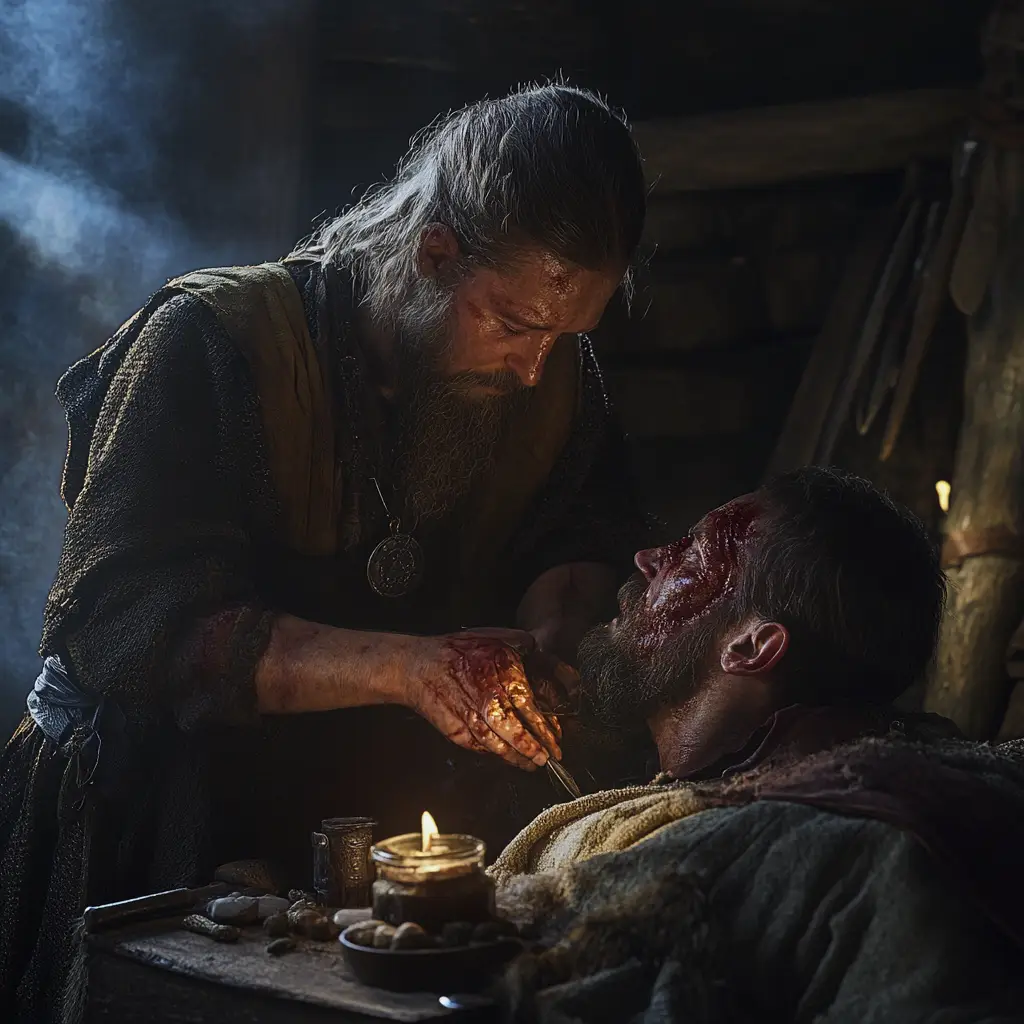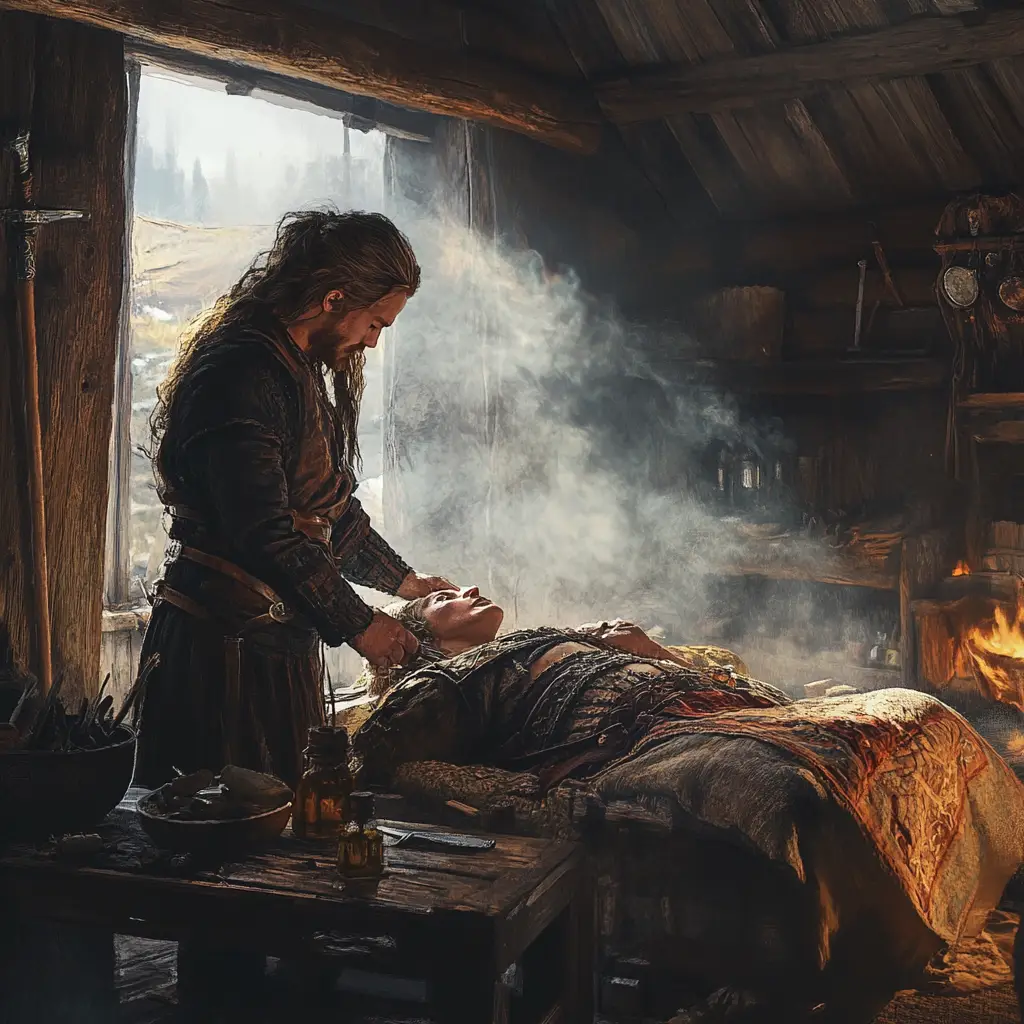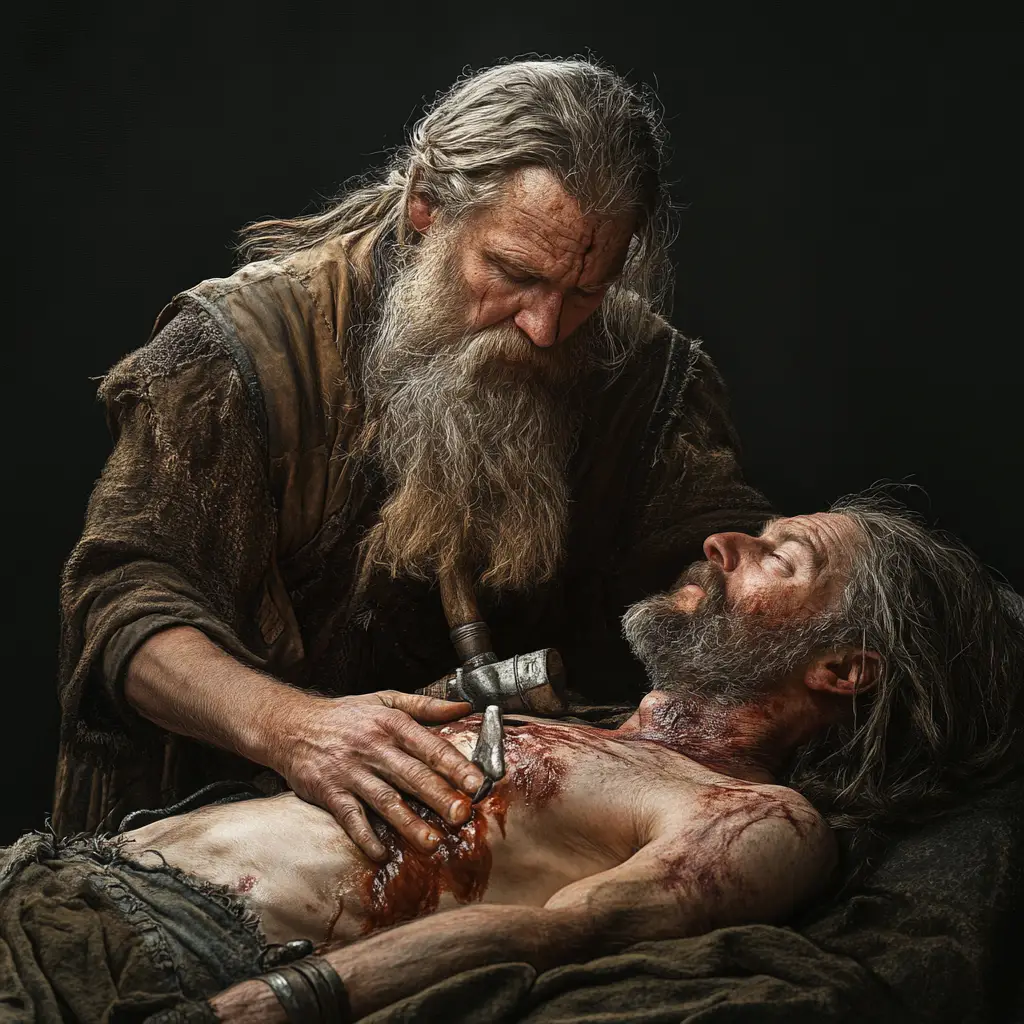In the Viking Age, wound care was a crucial skill for survival, particularly in a society shaped by warfare, raiding, and seafaring. Viking warriors and their families relied on a combination of practical knowledge, herbal medicine, and spiritual practices to treat injuries.
Cleanliness played an important role in wound care. Water from streams or wells was sometimes boiled to rinse cuts, and cloths were used to clean away dirt. Viking healers, often women with experience passed down through generations, applied poultices made from medicinal herbs. Plants such as yarrow, which is known for its ability to stem bleeding, and plantain, used to draw out infection, were common remedies. Honey was also valued for its antibacterial qualities and was sometimes applied directly to wounds.
When treating more serious injuries, such as sword or axe cuts, stitches were used to close the wound, usually made from animal sinew or linen thread. Needles fashioned from bone or bronze were employed for this purpose. Splints made of wood or bone might be used to set broken limbs, bound tightly with leather or cloth strips to keep them stable during healing.
Pain relief was basic, with alcohol and herbal preparations used to dull discomfort. Some sagas mention the use of strong drink to help warriors endure stitching or surgery. Healing was also deeply connected to spiritual beliefs, with prayers or charms recited to call upon divine protection and recovery.
Vikings understood the dangers of infection, even if they did not fully grasp its causes. Wounds that festered were treated with herbal salves, hot compresses, or by reopening and cleaning the site. Severe infections, however, could be fatal. Amputations are occasionally recorded, performed only as a last resort, with the hope of saving a person’s life.
Through a blend of practical treatment, natural medicine, and faith in the gods, Viking healers cared for wounds with remarkable resourcefulness. Their methods reveal a society that, while fierce and warlike, also placed great value on knowledge, skill, and the preservation of life.



